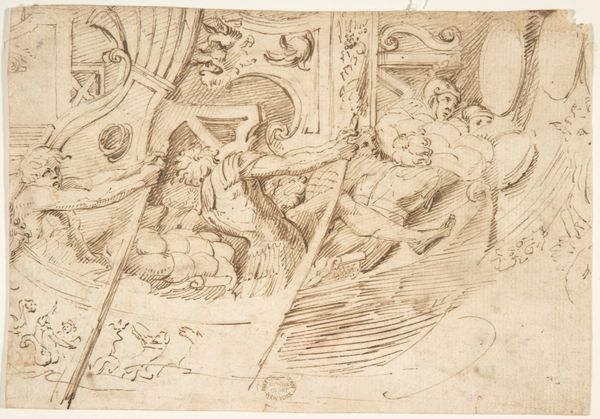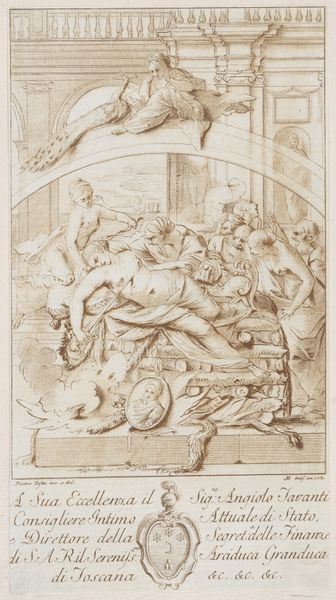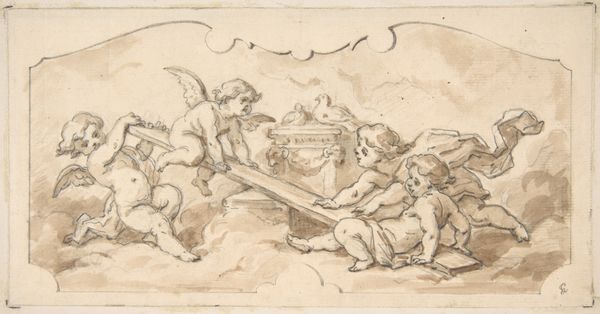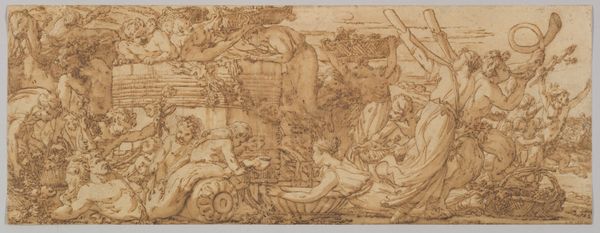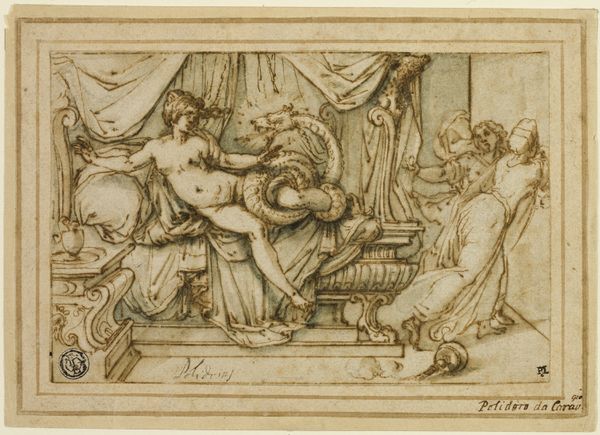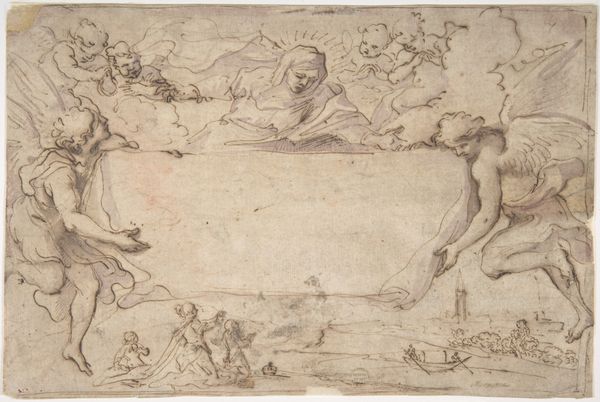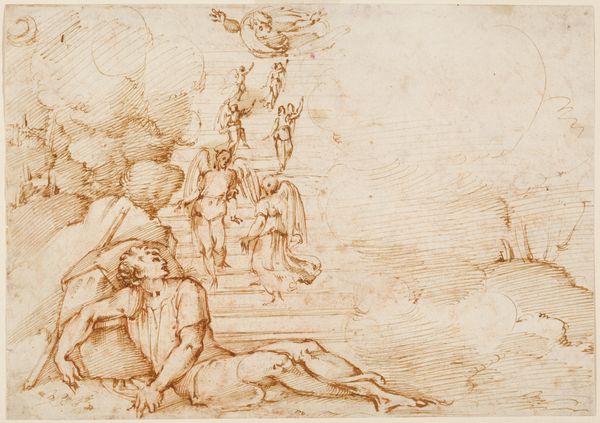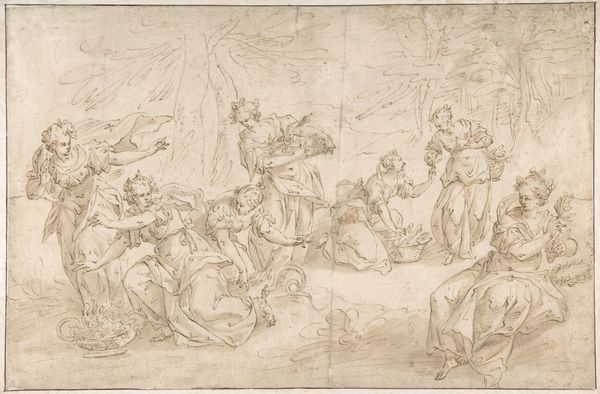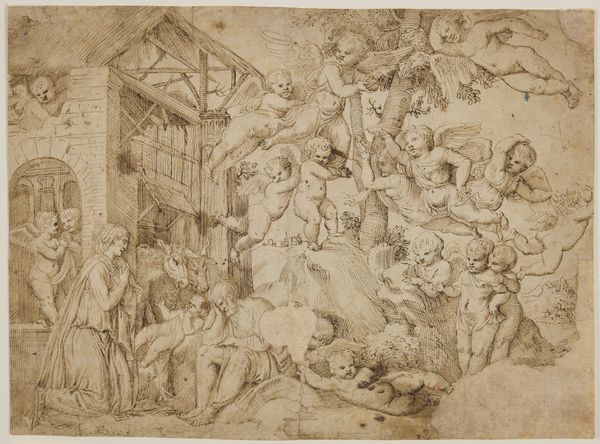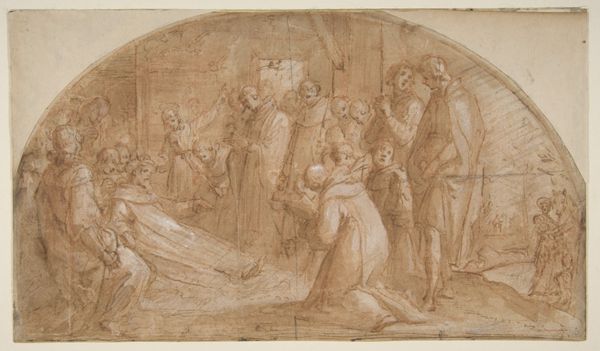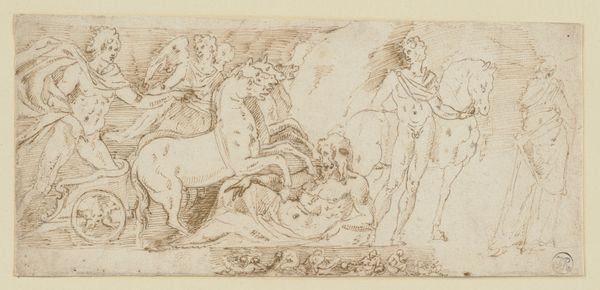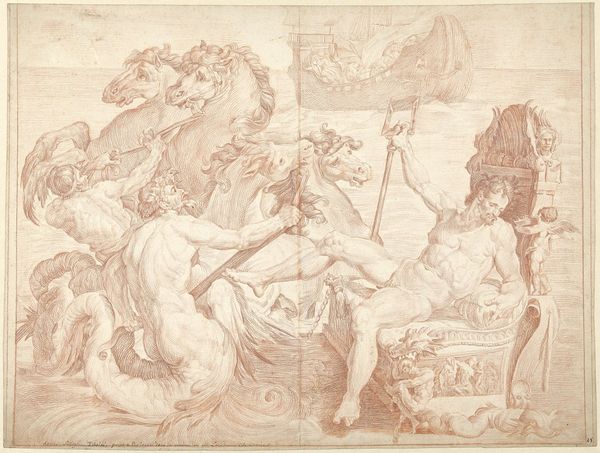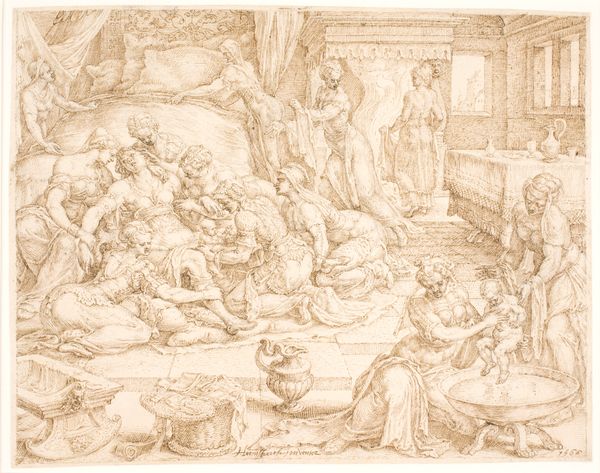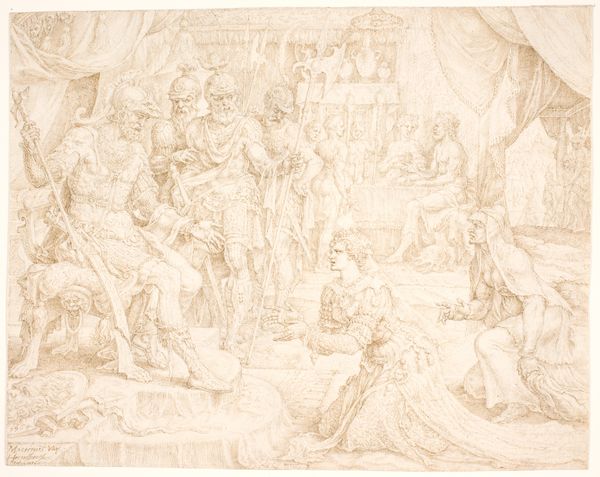
drawing, print
#
drawing
#
boat
#
toned paper
#
light pencil work
#
ink painting
#
animal
# print
#
pencil sketch
#
etching
#
charcoal drawing
#
ink drawing experimentation
#
coffee painting
#
men
#
pencil art
#
watercolor
Dimensions: 7-7/8 x 15-3/8 in. (20 x 39.1 cm)
Copyright: Public Domain
Curator: This captivating drawing, entitled "Roman Galley," dates back to somewhere between 1500 and 1600. It is currently housed at the Metropolitan Museum of Art. Editor: The immediate impression is one of incredible detail despite the artist's simple choice of sepia-toned paper and subtle ink. The galleys depicted seem alive. Curator: Absolutely, there’s an energy imbued here. This artwork presents us with an opportunity to delve into the sociopolitical dynamics of the Renaissance, examining themes of labor, class, and power. Galleys, such as those depicted here, represent both opulence and the exploitation of human effort; these ships served as instruments of war, reliant upon the toil of enslaved rowers. Editor: Focusing on the materials themselves, you can see the texture of the paper allowing the ink to create subtle shading effects, enhancing the three-dimensionality. Think about the labour, not only the enslaved oarsmen, but the artist’s own hand. Curator: It’s hard not to see the intersectionality between coerced labour at sea, and its depiction in artistic form. There’s something almost celebratory in the artistic choices – in that careful attention to detail – that invites us to look deeper at the ethical and social conditions represented. The visual elements elevate an awareness of inequitable social stratification to provoke examination of underlying historical truths. Editor: I see it also as an investigation in shipbuilding technology. This could be viewed as functional design. Consider also the trade networks of the period, influencing artistic material availability – the source of the paper, the pigments for the ink… it broadens out beyond artistic gesture into logistical considerations of early production. Curator: Certainly, the convergence of art, commerce, and maritime exploitation is not lost. I think interrogating how artistry reflects or subverts existing power relations and structures makes this print even more significant. Editor: It underscores the multiple facets within a seemingly simple piece. These connections enrich its relevance far beyond just representation. Curator: Exactly. By analyzing and deconstructing artworks like "Roman Galley," we unlock deeper understandings of culture. Editor: Agreed. I think through appreciating its materiality and modes of production we gain insight not just into this galley but an entire world it sailed into.
Comments
No comments
Be the first to comment and join the conversation on the ultimate creative platform.
